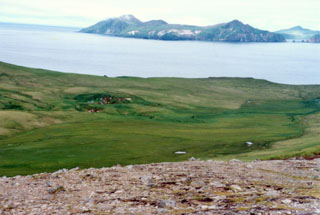Report on Davidof (United States) — 15 December-21 December 2021
Smithsonian Institution / US Geological Survey
Weekly Volcanic Activity Report, 15 December-21 December 2021
Managing Editor: Sally Sennert.
Please cite this report as:
Global Volcanism Program, 2021. Report on Davidof (United States) (Sennert, S, ed.). Weekly Volcanic Activity Report, 15 December-21 December 2021. Smithsonian Institution and US Geological Survey.
Davidof
United States
51.97°N, 178.33°E; summit elev. 328 m
All times are local (unless otherwise noted)
AVO reported that the earthquake swarm at Davidof declined during 14-21 December with up to two shallow earthquakes recorded per day. A shallow earthquake recorded on 17 December was a M 3.9. The closest seismometers are approximately 15 km E, on Little Sitkin Island. Davidof is also monitored by satellite data and remote infrasound and lightning networks. The Aviation Color Code remained at Yellow and the Volcano Alert Level remained at Advisory.
Geological Summary. A cluster of small islands between Segula and Little Sitkin in the western Aleutians, the largest of which is Davidof, are remnants of a stratovolcano that collapsed during the late Tertiary, forming a 2.7-km-wide caldera. The islands include Khvostof, Pyramid, Lopy, and Davidof; the latter three form the eastern rim of the mostly submarine caldera, sometimes referred to as the "Aleutian Krakatau." The islands were constructed above a roughly 100-m-deep submarine platform extending NW to Segula Island; the floor of the caldera lies 80 m below sea level. The islands are vegetated, but lava flows are recognizable, and Smith et al. (1978) suggested a possible Holocene age.
Source: US Geological Survey Alaska Volcano Observatory (AVO)

